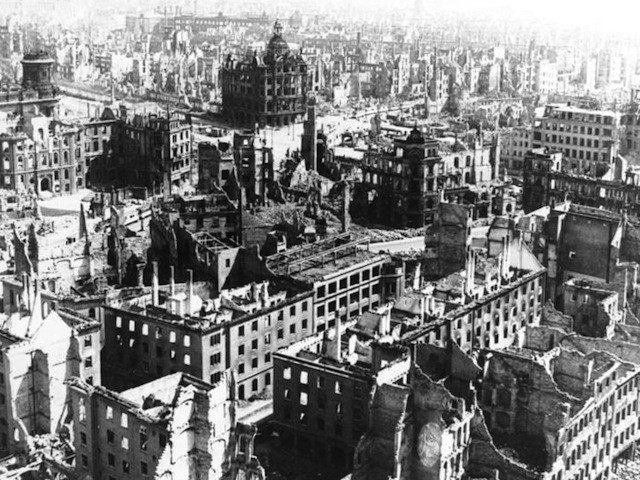Berlin (AFP) – Seventy years ago Allied bombing laid waste to the historic German city of Dresden, whose post-war image as a symbol of peace has been dented recently by anti-Islamic protests.
President Joachim Gauck will attend commemorations Friday in the eastern city’s emblematic 18th-century Church of Our Lady, which has been rebuilt since it was reduced to rubble in the massive World War II raids.
Long left in ruins as a war memorial, the Lutheran church — one of the architectural jewels of the Baroque city dubbed the “Florence on the Elbe” river — was rebuilt with around 8,400 of the original bricks after German reunification and reconsecrated a decade ago.
From February 13, 1945, Allied forces unleashed a massive 37-hour bombing raid on Dresden, sparking a firestorm that destroyed much of the city centre.
Previously almost untouched by the Allied air assault on Nazi Germany, the city became a symbol of the horrors of war, even though others, such as the northern port of Hamburg, suffered far worse devastation.
In Dresden, up to 25,000 people died in the raids, which some critics said were strategically unjustified as Hitler’s Germany was already effectively defeated and the bombs appeared to be aimed at civilians rather than military targets.
Far-right supporters sought for years to exploit the anniversary of the bombings, painting Germany as the victim.
Annual neo-Nazi gatherings in the past drew up to 6,000 people and saw the staging of what they termed “funeral marches” through Dresden.
But the demonstrations have dwindled and only around 500 people joined last year’s event, partly due to a strong anti-racist and pacifist counter-demonstration.
– ‘Openness, tolerance’ –
Anti-fascist organisations are again due to form a human chain in Dresden this year to pay homage to the victims of the massive bombing, as in past years, although no big far-right gathering is expected.
Dresden Mayor Helma Orosz has said that Friday’s commemorations would be an opportunity to demonstrate the city’s core values of “openness to the world and tolerance”.
The city has hit international headlines for being the hub of an “anti-Islamisation” movement that emerged in October and brought thousands on to the streets for weekly protests.
At their peak just after the deadly Islamist attacks in Paris in early January, the PEGIDA marches saw 25,000 people take part.
But the movement has since fallen into disarray after its founder resigned when a picture of him looking like Hitler surfaced and other leading members subsequently quit.
Chancellor Angela Merkel has condemned the movement, which sprung up in a region where foreigners only make up around 2.5 percent of the population, mostly from Russia and eastern Europe.
Far-right groups had in the past claimed that up to 500,000 people were killed in the 1945 air assault on the Baroque city.
But an official commission of historians concluded in 2010 that about 25,000 people died in the raids.
After more than five years of research, the commission into the victims of the firestorm unleashed by British and US bombers aimed to resolve a bitter debate that had raged for decades.
It reviewed records from city archives, cemeteries, official registries and courts and checked them against published reports and witness accounts.

COMMENTS
Please let us know if you're having issues with commenting.